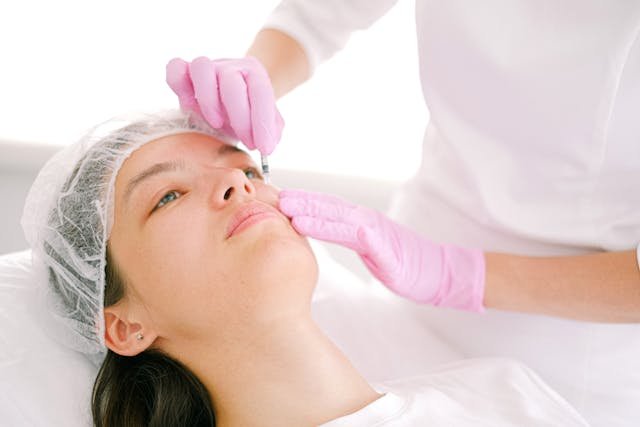Cosmetic surgery has gained immense popularity over the last few decades, with millions of people seeking various procedures to enhance their appearance. Among the many specialties in medicine, ophthalmology stands out as a crucial area where cosmetic and functional needs intersect. This article delves into the relationship between cosmetic surgery and ophthalmology, exploring procedures, motivations, advancements, and the future of these fields, with a specific focus on trends and options available in Calgary.
Understanding Cosmetic Surgery
Cosmetic surgery encompasses a range of procedures aimed at improving a person’s appearance. These can be surgical or non-surgical and include techniques such as facelifts, rhinoplasty, breast augmentation, and liposuction. While cosmetic surgery primarily focuses on aesthetic enhancement, it can also serve to restore confidence and improve self-esteem.
People pursue cosmetic surgery for various reasons, including societal pressures, personal dissatisfaction with their appearance, or the desire to feel younger. The rise of social media has further amplified these motivations, as individuals often compare themselves to influencers and celebrities who showcase their perfect appearances online. This constant exposure has led to increased demand for cosmetic procedures.
The Role of Ophthalmology
Ophthalmology is the branch of medicine dedicated to the diagnosis, treatment, and prevention of eye disorders and diseases. Ophthalmologists are medical doctors specializing in eye care, encompassing everything from routine eye exams to complex surgical procedures. Within ophthalmology, there exists a fascinating intersection with cosmetic surgery, particularly concerning eyelid surgery and other aesthetic enhancements.
Cosmetic Procedures in Ophthalmology
One of the most common cosmetic procedures performed by ophthalmologists is blepharoplasty, or eyelid surgery. This procedure aims to remove excess skin, fat, or muscle from the upper and lower eyelids, creating a more youthful and refreshed appearance. As people age, the skin loses elasticity, leading to sagging eyelids, puffiness, and dark circles. Blepharoplasty can help to address these issues, improving both the aesthetic appearance and, in some cases, the functional aspect of vision.
In addition to blepharoplasty, ophthalmologists may also perform procedures such as brow lifts and cosmetic injectables like Botox. These treatments can enhance the appearance of the forehead, eyebrows, and surrounding areas, providing a more rejuvenated look. The expertise of ophthalmologists in eye anatomy and function makes them uniquely qualified to perform these delicate procedures, ensuring optimal results. For instance, Botox in Calgary has become a popular choice among individuals seeking to reduce the appearance of fine lines and wrinkles around the eyes.
Skin Tag on Eyelid Removal
Another common concern addressed by ophthalmologists is the presence of skin tags on the eyelids. While often harmless, these growths can be a cosmetic nuisance and may affect a person’s self-esteem. Skin tag on eyelid removal is a relatively simple procedure performed by ophthalmologists, helping patients achieve a smoother eyelid contour and enhancing their overall appearance.
The Emotional Impact of Cosmetic Surgery
The decision to undergo cosmetic surgery, particularly in the field of ophthalmology, is often deeply personal and emotional. Many individuals seeking procedures like blepharoplasty report feeling self-conscious about their appearance, which can impact their social interactions and overall quality of life. By enhancing their physical appearance, patients often experience a significant boost in confidence and self-esteem.
Moreover, studies have shown that successful cosmetic procedures can lead to positive psychological outcomes. Patients frequently report increased satisfaction with their appearance and improved mental health following surgery. This emotional aspect highlights the importance of understanding a patient’s motivations and expectations, ensuring that they are making informed decisions about their surgical choices.
Technological Advancements
Advancements in technology have revolutionized the fields of cosmetic surgery and ophthalmology. Minimally invasive techniques, laser technology, and innovative imaging methods have enhanced the precision and safety of procedures. For instance, laser-assisted blepharoplasty allows for more precise incisions and reduced recovery times, leading to improved outcomes for patients.
Moreover, 3D imaging and simulation tools enable patients to visualize potential results before undergoing surgery, allowing for more informed decision-making. These technological advancements contribute to a growing trend of patient-centered care, where individuals feel empowered in their treatment choices.
In Calgary, options like cataract surgery in Calgary have also benefited from these advancements. As cataract surgery in Calgary becomes more accessible and effective, patients experience improved vision and quality of life, often in conjunction with other cosmetic procedures.
Chemical Peels in Cosmetic Enhancement
In addition to surgical options, non-surgical procedures such as chemical peels have gained popularity in cosmetic enhancement. Chemical peels in Calgary offer patients a way to rejuvenate their skin without the need for invasive surgery. These treatments can improve skin texture, reduce fine lines, and address pigmentation issues, further complementing surgical procedures performed by ophthalmologists.
The Future of Cosmetic Surgery and Ophthalmology
As society continues to evolve, so too will the fields of cosmetic surgery and ophthalmology. The increasing demand for aesthetic enhancements will likely spur further advancements in techniques and technology. Additionally, as the stigma surrounding cosmetic procedures diminishes, more individuals will seek out these options, broadening the patient base for both fields.
Education and training will also play a critical role in the future of cosmetic surgery within ophthalmology. As the number of cosmetic procedures increases, ophthalmologists must continue to refine their skills and knowledge, ensuring that they remain at the forefront of aesthetic techniques while providing safe and effective care.
Ethical Considerations
With the rise of cosmetic procedures comes the need for ethical considerations. The responsibility of healthcare providers is to ensure that patients have realistic expectations and understand the potential risks and complications associated with surgery. Open and honest communication is crucial in fostering a trusting relationship between patients and their physicians.
Furthermore, as cosmetic surgery becomes more accessible, particularly through social media and online platforms, individuals must be wary of misleading information and the potential for exploitation. Medical professionals must advocate for patient safety and promote ethical practices in the cosmetic industry, ensuring that patients receive the highest standard of care.
Conclusion
The intersection of cosmetic surgery and ophthalmology represents a fascinating area where beauty and vision converge. Through procedures like blepharoplasty and skin tag removal, as well as non-surgical treatments such as Botox and chemical peels, ophthalmologists play a vital role in enhancing both appearance and self-confidence. As the demand for cosmetic enhancements continues to rise, the future of these fields promises exciting advancements, ethical considerations, and an ongoing commitment to patient-centered care. Understanding the emotional impact and motivations behind cosmetic surgery will remain essential in providing holistic and effective treatment options for individuals seeking to improve their lives through aesthetic enhancement.


